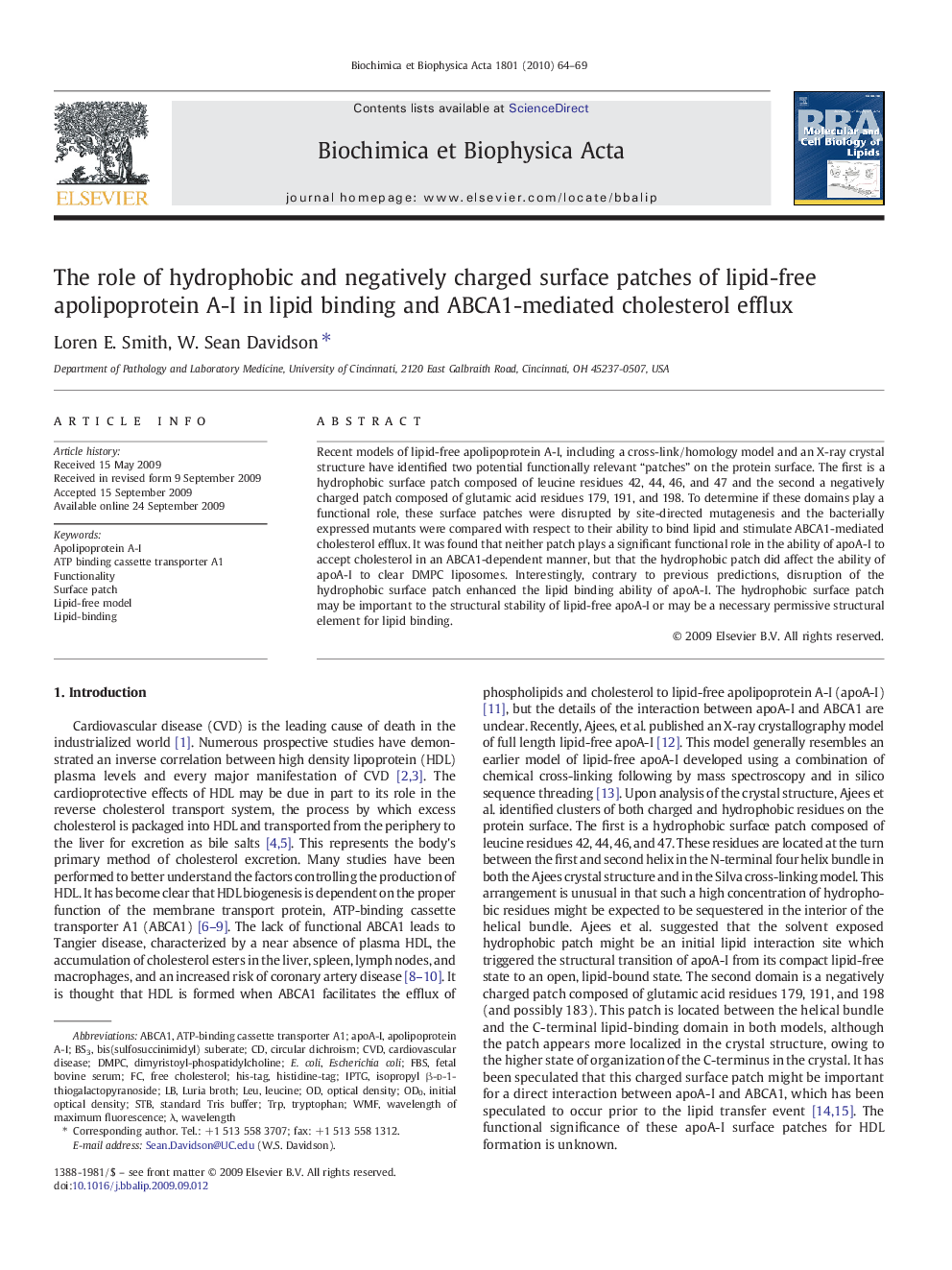| Article ID | Journal | Published Year | Pages | File Type |
|---|---|---|---|---|
| 1949691 | Biochimica et Biophysica Acta (BBA) - Molecular and Cell Biology of Lipids | 2010 | 6 Pages |
Abstract
Recent models of lipid-free apolipoprotein A-I, including a cross-link/homology model and an X-ray crystal structure have identified two potential functionally relevant “patches” on the protein surface. The first is a hydrophobic surface patch composed of leucine residues 42, 44, 46, and 47 and the second a negatively charged patch composed of glutamic acid residues 179, 191, and 198. To determine if these domains play a functional role, these surface patches were disrupted by site-directed mutagenesis and the bacterially expressed mutants were compared with respect to their ability to bind lipid and stimulate ABCA1-mediated cholesterol efflux. It was found that neither patch plays a significant functional role in the ability of apoA-I to accept cholesterol in an ABCA1-dependent manner, but that the hydrophobic patch did affect the ability of apoA-I to clear DMPC liposomes. Interestingly, contrary to previous predictions, disruption of the hydrophobic surface patch enhanced the lipid binding ability of apoA-I. The hydrophobic surface patch may be important to the structural stability of lipid-free apoA-I or may be a necessary permissive structural element for lipid binding.
Keywords
E. colibis(sulfosuccinimidyl) suberateBS3dMPCApoA-IABCA1LEUIPTGTrpFBSATP binding cassette transporter A1ATP-binding cassette transporter A1Apolipoprotein A-IEscherichia coliisopropyl β-D-1-thiogalactopyranosideHis-tagHistidine-tagcardiovascular diseaseTryptophanCVDcircular dichroismfetal bovine serumWavelengthFunctionalityLuria brothLeucineSTBLipid-bindingoptical densityfree cholesterol
Related Topics
Life Sciences
Biochemistry, Genetics and Molecular Biology
Biochemistry
Authors
Loren E. Smith, W. Sean Davidson,
